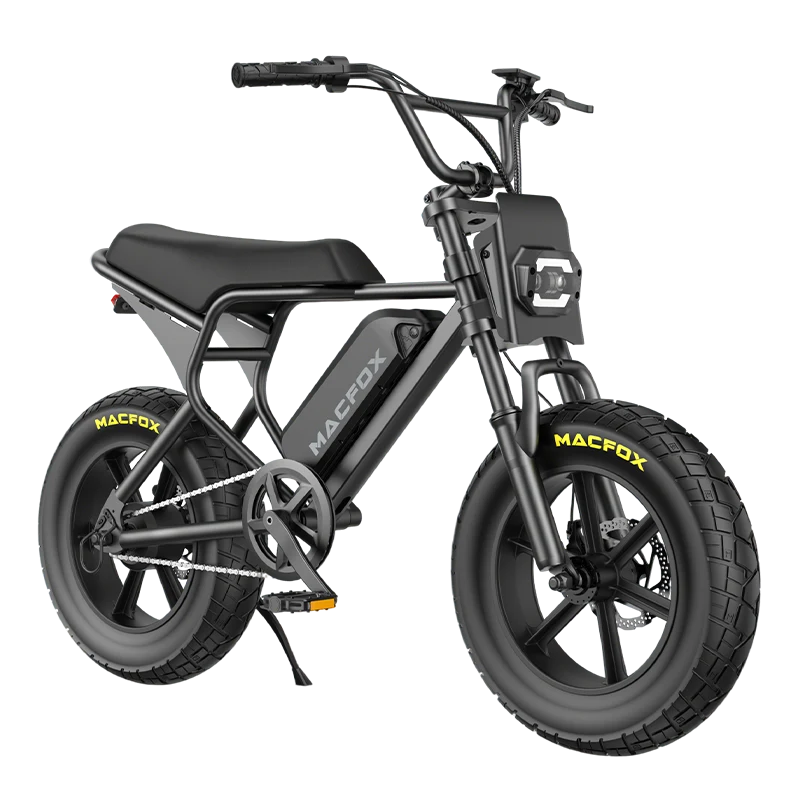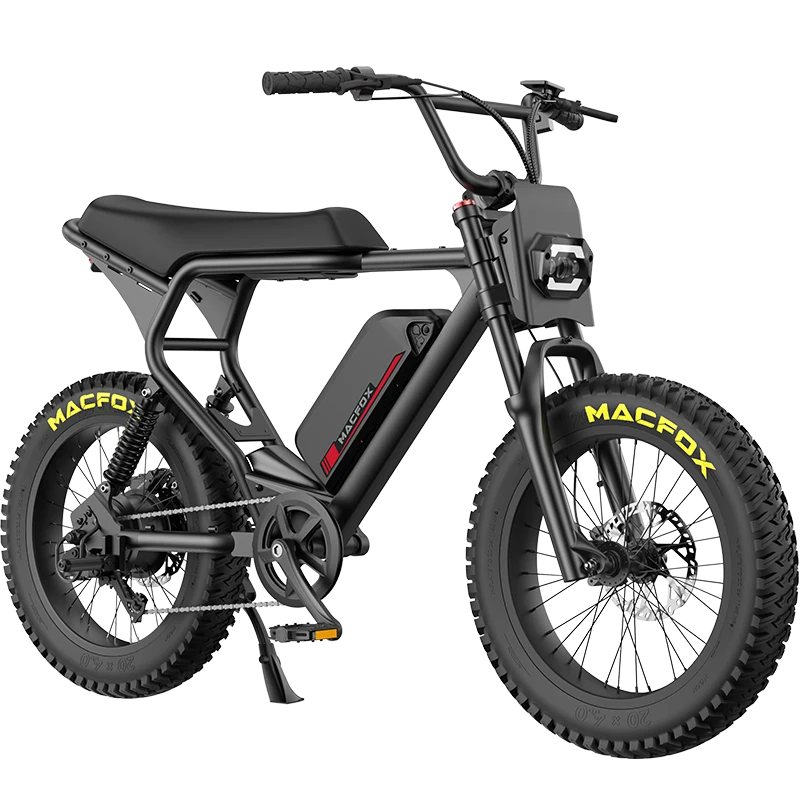Transportation to school is more than a mere daily routine; it is a significant part of the educational experience, shaping both the physical and mental well-being of students. The introduction of electric bicycles (e-bikes) in this arena is not just a change in mode but a shift in perspective. E-bikes, with their blend of physical biking and electric assistance, offer a unique solution to school commutes. But is bringing an electric bicycle to school a practical and beneficial choice? This in-depth exploration will shed light on the multifaceted role of e-bikes in educational transportation.
Decoding Electric Bicycles: More Than Just Bikes
In the world of e-bikes, the Macfox X1 Electric Commuter Bike is the epitome of innovation and efficiency, making it ideal for school commuting. The Macfox X1 features a powerful motor and long-lasting battery to ensure a reliable, smooth ride even over long distances. Its ergonomic design and adjustable settings accommodate students of varying heights and riding preferences. Notably, the Macfox X1 features enhanced safety elements such as an advanced braking system and bright LED lights, making it a safe choice for young commuters. Additionally, its sleek design and user-friendly interface make it an attractive and practical option for students seeking a balance between physical activity and commuting convenience.

The Upsides of Electric Bicycles for School Travel
Eco-Friendly Commute: Embracing e-bikes for school travel is a step toward environmental stewardship. Unlike cars or motorbikes, e-bikes emit no pollutants, significantly reducing the carbon footprint of daily school commutes. This adoption of green transportation aligns with growing ecological awareness and the need for sustainable living practices.
Promoting Physical Health: Despite the electric assistance, e-bikes still require pedaling, providing a balanced form of physical exercise. This moderate level of daily physical activity can improve cardiovascular health, build muscle strength, and enhance overall physical well-being, especially important in the formative years of school students.
Cost Efficiency: The cost-effectiveness of e-bikes is notable. While the initial investment might be higher than traditional bicycles, the long-term savings on fuel, parking, and maintenance make it an economically viable option for regular school commutes.
Time-Saving and Convenient: E-bikes can be faster than traditional bikes and, in some cases, even cars, especially in urban settings with traffic congestion. This efficiency is a boon for students, allowing them more time for studies and extracurricular activities.
Safety and Accessibility: E-bikes offer a safe mode of transport for students. Their design and speed controls make them a safer alternative to motor vehicles, and they often come equipped with features like lights and reflectors for enhanced visibility.
Fostering Independence and Responsibility: Using an e-bike can instill a sense of responsibility and independence in students. Managing their commute, maintaining their bike, and navigating routes contribute to their personal development.
Cultivating Technological and Environmental Consciousness: The use of e-bikes also educates students about sustainable technology and its applications in daily life, fostering an early awareness and appreciation for innovative solutions to environmental challenges.
Related Reading: What Is The Average Cost Of An Electric Bike
Potential Challenges and Considerations
While the benefits are substantial, there are practical considerations in adopting e-bikes for school commutes:
Safety Concerns and Legal Regulations: Safety is paramount, especially for younger students. Understanding and adhering to traffic rules, e-bike specifications, and wearing protective gear are essential.
Initial Costs and Upkeep: The upfront cost of an e-bike and its maintenance can be a barrier for some families. Evaluating budget and long-term savings is crucial in making an informed decision.
Battery and Range Limitations: The dependency on battery life and charging infrastructure needs consideration, especially for longer commutes.
Storage and Security at School: Adequate and secure parking spaces at schools are necessary to prevent theft and damage.
Weather-Related Issues: Adverse weather conditions can impact the viability of e-bikes, requiring alternate plans for such days.
Physical Effort and Skills: While e-bikes reduce effort, a basic level of physical fitness and biking skills is still required.
Electric Bicycle vs. Traditional Commute Methods
Comparing e-bikes to walking, school buses, and car rides reveals distinct advantages in terms of eco-friendliness, cost, health benefits, and convenience. However, each method has its place, and the choice depends on individual circumstances and preferences.
Student Experiences: Life on Two Wheels
Hearing from students who use e-bikes offers real-world insights into their impact. Their stories highlight the practicality, joys, and challenges of e-bike commuting.
Educators and Experts: A Broader Perspective
The views of educators and transport experts provide a comprehensive understanding of e-bikes in educational settings. They discuss safety, the educational benefits, and the role of schools in promoting sustainable transportation.
E-Bikes: Paving the Way for Future School Journeys
This section explores how e-bikes fit into the evolving landscape of school transportation, considering technological advancements and potential policy shifts.

Conclusion
Summing up, this article provides a comprehensive overview of the viability of electric bicycles for school commutes, balancing the pros and cons to offer a nuanced perspective.
FAQs
Is an Electric Bicycle Safe for School Commutes?
Yes, electric bicycles can be a safe option for school commutes when used responsibly. They typically have features like speed control and enhanced braking systems. However, it's important for students to wear helmets, understand traffic rules, and have a basic level of biking proficiency.
How Does an Electric Bicycle Benefit Student Health?
Electric bicycles strike a balance between physical exercise and commuting efficiency. They require pedaling, which promotes cardiovascular health and muscle strength, but with less strain compared to traditional bicycles. This moderate physical activity is beneficial for students' overall health.
What Should Be Considered When Choosing an Electric Bicycle for School?
Key factors include the bike's battery life, the distance of the school commute, the student's age and biking skills, and the availability of safe bicycle storage at school. It's also important to consider the local weather conditions and any legal requirements specific to e-bikes in your area.


















